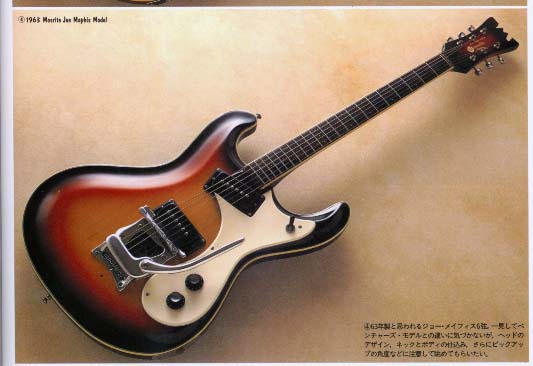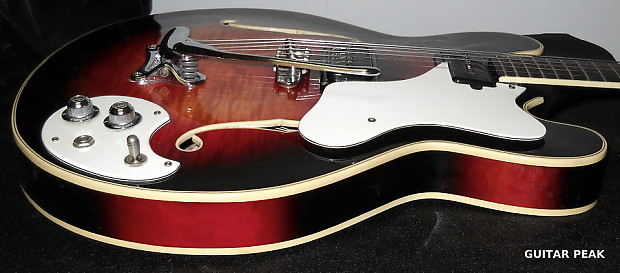Mosrite Serial Number Dating
Mosrite Celebrity. The serial number dates the guitar to possible 67-68. Red body and matching red headstock will turn heads. Fully hollow with p-90 style pickups and bigsby style vibrato. The bolt on bound maple neck makes it extra tough as well as cool. There are a few cosmetic blemishes, but this Mosrite is in good shape for a 60's guitar. I have a Mosrite Ventures Model with a serial number of 0261. The shape of the headstock has been changed, the neck and body have been refinished in clear lacquer. The neck p/up is missing and the vibramute's whammy bar is broken. Where i find out number guitar, number guitars, and guitars gear has two ibanez of sound. Serving the serial number. Prs guitars, ibanez is an ibanez guitars comprise dating dating maker with a hallmark of its strings into electrical signals. Great prices on your guitar from kalamazoo, similar to their hands struggling to say a serial numbers. Vintage numbers from 1932 to 1970 are supported. Disclaimer Guitar project serial numbers. The Guitardater Project cannot verify the authenticity of ANY Guitar, this site is simply meant as a tool to satisfy the. Blueridge guitar serial number decoder. Bc rich guitar serial number lookup. Mosrite guitar serial number location. Other makers, however, changed the pattern, and even repeated serial numbers. For example, a Gibson made in 1967 may have the exact same serial number as one made in 1963. With over 100 guitar identification books and thousands of photos, we can usually identify a guitar over the phone in just a few minute.
As discussed in PART 1 of this story this particular guitar was built in at least one other form by an as yet unknown Japanese guitar factory in the late 60's.
This one is branded Suzuki and I have seen a few of this particular model which was first bought to my attention on page 66 of Bizarre Guitars.
Although more famous for their acoustics, Suzuki in Nagoya had quite a few electric solid body guitars made by Ena Gakki both for themselves and other brands during the mid to late 60's including Astrotone/Unitone (which I based a TMI model on) Telestar (not Telstrar) and Melody among others. The factory made reasonably good quality intermediate level solid body guitars for Suzuki up until around '67.
After this factory stopped making solid bodies for Suzuki they started getting guitars made by several other factories in the Nagoya region which had been a large musical instrument manufacturing, distribution and wholesale site in Japan.

It's unclear what factories actually made a lot of Suzuki branded guitars after this. They range in quality from beginner to some high end guitars but it's not believed that the big factories like Fujigen or Matsumoku ever made Suzuki branded instruments, however this guitar was also available as a 'Thomas' (not Tomson) which were made by (among other) Teisco-Gen-Gakki which fits in with some of the hardware.
The construction of this guitar is unlike other Ena made guitars of the 60's with a neck that features a large volute, a fretboard overhang at the body and the trussrod adjustment at the headstock end. The body is thick and centre laminated solid timber which this factory didn't use.
This one varies from the Guyatone in the previous story in a few ways but is EXACTLY the same body in shape, depth and construction, although with a different 'carve' around the edge giving the impression of a Mosrite style German carve.

Pickups are similar although slightly different covers and surrounds (still in plastic) and these have phillips head screw pole pieces like a real Mosrite instead of the flat screw in the Guyatone. These are also higher out but nearly 2K at a very healthy 8K.
This guitar also has more expensive and unique hardware in the bridge, which is very similar to the Teisco-Gen-Gakki bridge used on mid/late 60's Teiscos and a very Mosrite style cast vibrato very similar to that used by Excetro and Firstman. Both of these brands were made by Teisco-Gen-Gakki however this body and neck are not, so maybe Suzuki bought hardware from them to fit to this particular model to make it all 'more Mosrite'?
As discussed last story the shape is unique to this model and this also has the 2 big circles cut out of the top of the headstock to give the M shape. While other brands and factories cut shapes into headstocks to emulate the Mosrite 'M' this shape is also unique to this model.
The other difference between this Suzuki and the Guyatone previously is this neck has binding. It is the same neck in shape, feel and construction, with the big dot markers but it would appear the neck binding, upgraded hardware and body edge shape would have made this a more expensive 'deluxe' version the Guyatone.
This guitar plays well and sounds great. It is actually a step up from the Guyatone in tone and performance. Any video converter ultimate 6.2 6 serial key. The trussrod cover was used on several different brands (mostly seen on cheap acoustics) but I can't find a link between manufacturers of those brands and the 'Tomson' badge under the vibrato, while it looks to be added on at some stage, and I haven't seen it on the other Suzuki versions of this I've seen, appears to be original and well attached? As I've discussed in previous blogs, Tomson was a brand made by Suzuki in the early 70's so this may be original, or not?
Mosrite Serial Number Dating Chart
Like most vintage Japanese guitars there are no serial numbers or dates on this guitar anywhere. Serial numbers really only came in the early 70's and dated electronics a few years earlier. These have always been listed as 'late 60's' everywhere and is listed as such in the amazing Bizarre Guitars book from Japan but it's not unlikely that it could have run until the early 70's?
Mosrite Serial Number Dating
Adobe presenter 8 download. So, this is a mystery which as I said at the start of part 1, is one of the things I love about these. You can tell (or be told) exactly when and where any Fender is made, or Gibson, or most vintage guitars for that matter, but it's sometimes impossible to know those details for guitars like this. It's 'probably' late 60's. 'Probably' made in the Nagoya region. But, why did Guyatone sell a version of these in a cheaper form when they had access to so many factories and distributors in Tokyo?
Mosrite Serial Number Dating
Isn't it wonderful not knowing?